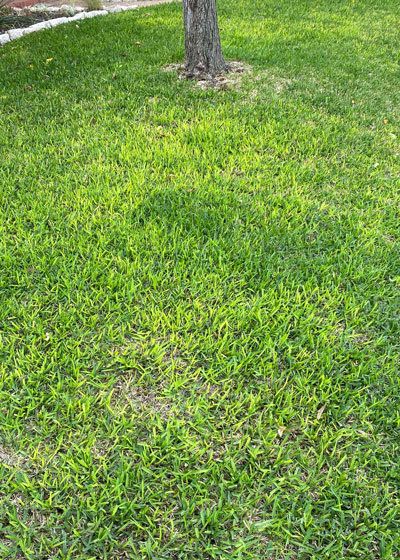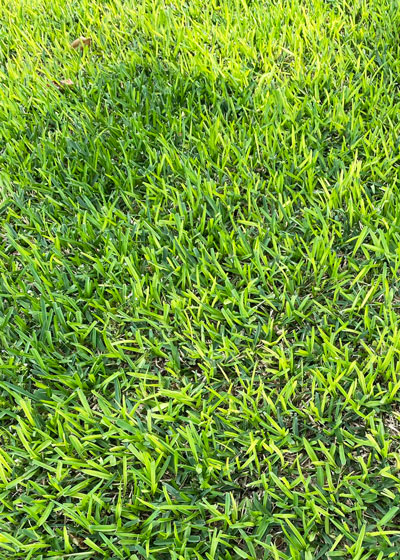Question of the Week: May 13, 2021

“Why is my lawn so yellow? What can I do to correct it?”
This is take all root rot, otherwise known as “TARR” and “take all patch.” And, it’s as annoying as can be. It shows up just as your lawn ought to be looking its best in the spring green-up.

Take all root rot…
• Fungal, caused by Gaeumannomyces graminis var. graminis (Please have that committed to memory by noon tomorrow.)
• Attacks St. Augustine and zoysia, but all warm-season turfgrasses.
• Causes grass roots to be shortened and stubby.
• Runners pull loose easily from the soil, almost as if white grub worms had damaged the turf, but grubs will not be found in the soil.
• Blades start to yellow, and problem appears in irregular sweeps across the lawn.
• Left unchecked, the disease seriously weakens and can kill large portions of afflicted lawns.

• Critical note: Turf, especially St. Augustine, that is under stress is especially vulnerable. Poorly drained areas, underfed (or over-fed) grass, irregularly mowed turf and perhaps even winter-damaged grass may all be more likely to be infected with TARR. As much as possible, correcting the cultural problems is key to solving the disease issue.
• The fungicide Azoxystrobin, sold at consumer level as Scotts Disease-EX, offers good control of moderate outbreaks, but it must be done in tandem with bringing cultural issues back in line.
• TARR is an April-May (cool-season) disease. It will abate on its own as it gets hot, but if it’s taking a toll on your turf right now, you should not try to wait it out.
